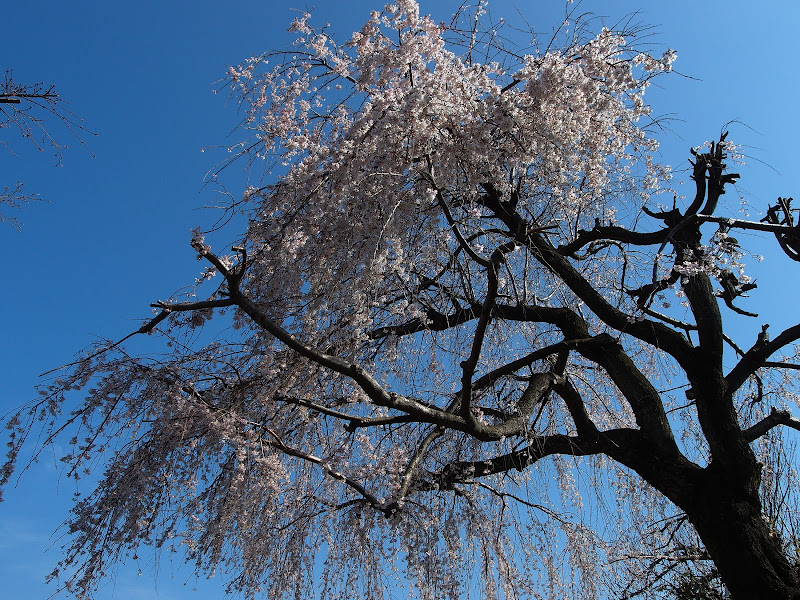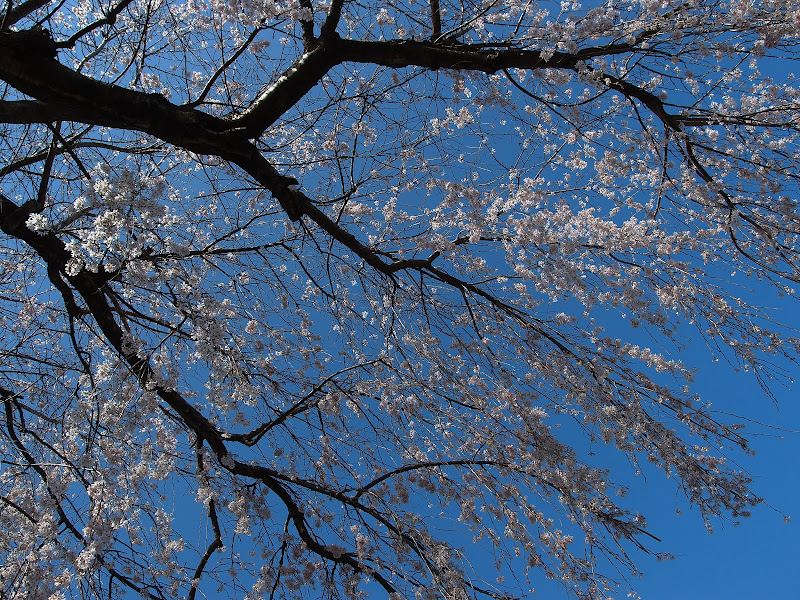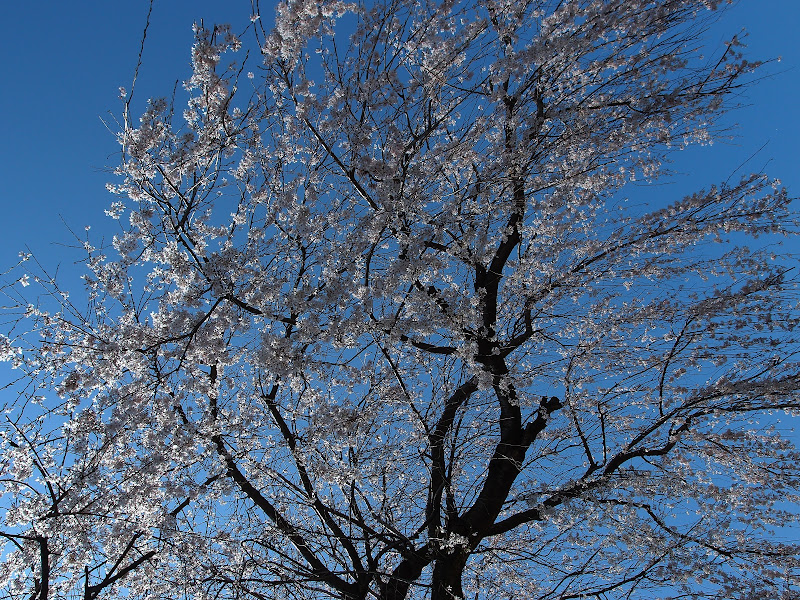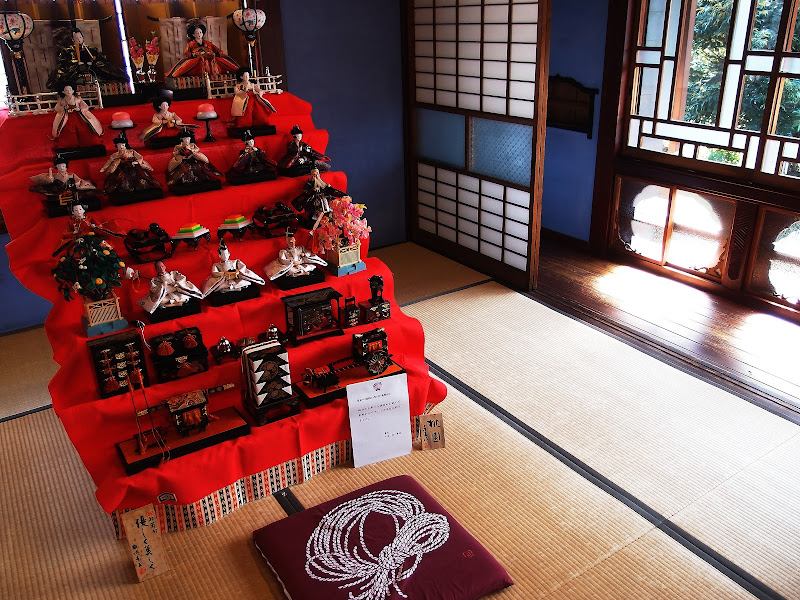
Flowering cherry is very early this year.
Severe cold was already forgotten.
Four Seasons always come around.

SAKURA is Japanese view of life and death itself.
Short life. Ephemeral fate.
We are reminded them every year from the ancient times.

Joy to born. Sorrow to gone.
Both are tied.
Ironically they will create comedy and tragedy, mixing or even reversing.
今年より 春知りそむる 桜花
散ると言ふことは ならはざらなむ
紀貫之 (872 – 945) 古今和歌集 (醍醐天皇 編)
in this year known spring for the first time Cherry Blossoms SAKURA
I want to say that NOT learning to fall
Ki no Tsurayuki (872 – 945) Kokin Wakashū (compiled by Emperor Daigo)
"生" (shō, or sei). It is translated as life, living, lifetime, birth, etc.
This character is written by Kanzi, Semi-cursive script.
Etymology : hieroglyph
Form that grows out of the grass
いま桜 咲きぬと見えて うす曇り
春にかすめる 世の気色かな
読人知らず 新古今和歌集 (後鳥羽上皇 編)
Now Cherry Blossoms signs as blooming slightly overcast sky
Spring is hazy views of the world
unknown Shin Kokin Wakashū (compiled by the retired emperor Go-Toba)
Kyoto has a lot of noted places of the cherry tree.
The history might polish them.
Taking more than 1,000 years.
ゆかん人 来ん人しのべ 春がすみ
立田の山の はつ桜花
西行法師 (1118 – 1190) 新古今和歌集 (後鳥羽上皇 編)
Those who have gone or coming, please remember Spring haze
Tatsuta mountains first cherry blossoms
Saigyō (1118 – 1190) Shin Kokin Wakashū (compiled by the retired emperor Go-Toba)

